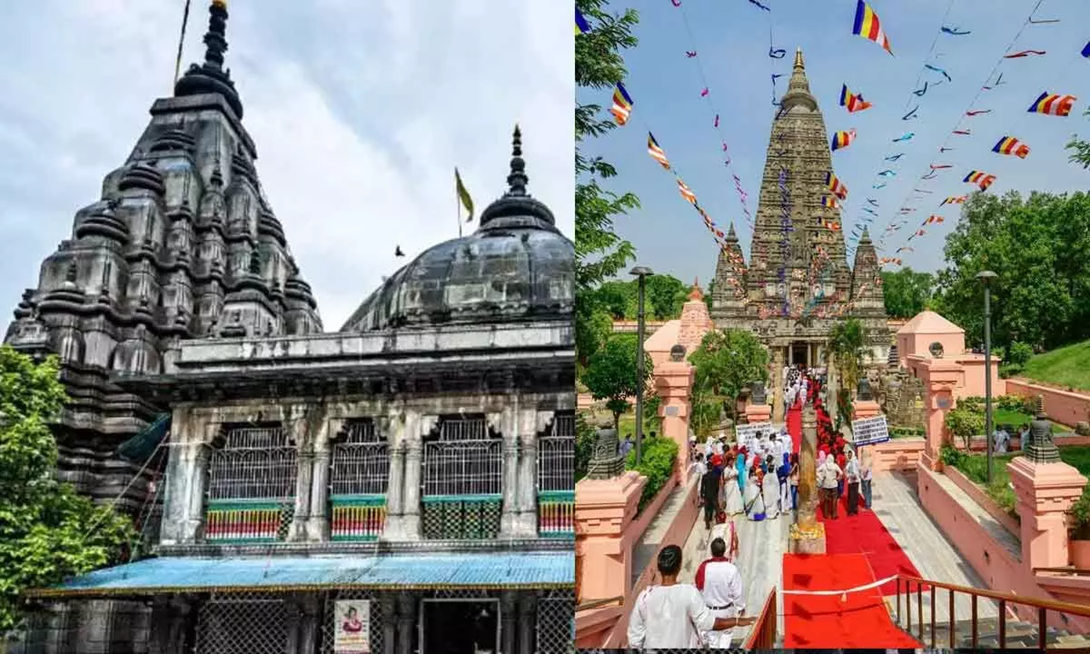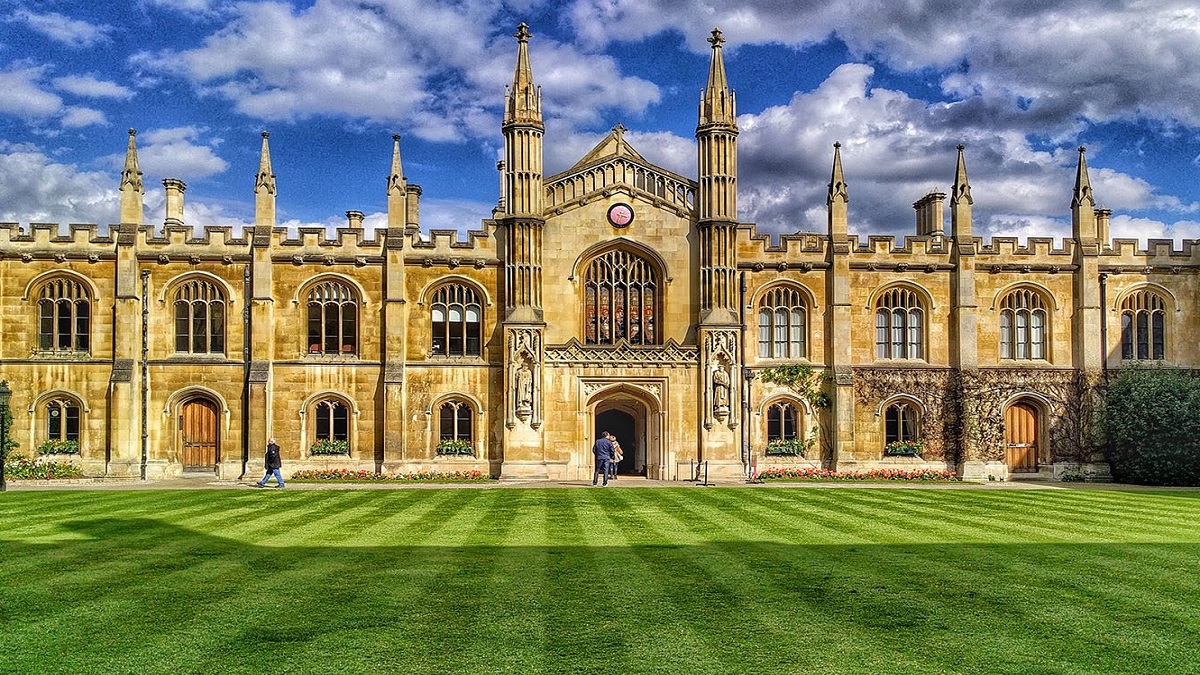- Courses
- GS Full Course 1 Year
- GS Full Course 2 Year
- GS Full Course 3 Year
- GS Full Course Till Selection
- Answer Alpha: Mains 2025 Mentorship
- MEP (Mains Enrichment Programme) Data, Facts
- Essay Target – 150+ Marks
- Online Program
- GS Recorded Course
- Polity
- Geography
- Economy
- Ancient, Medieval and Art & Culture AMAC
- Modern India, Post Independence & World History
- Environment
- Governance
- Science & Technology
- International Relations and Internal Security
- Disaster Management
- Ethics
- NCERT Current Affairs
- Indian Society and Social Issue
- NCERT- Science and Technology
- NCERT - Geography
- NCERT - Ancient History
- NCERT- World History
- NCERT Modern History
- CSAT
- 5 LAYERED ARJUNA Mentorship
- Public Administration Optional
- ABOUT US
- OUR TOPPERS
- TEST SERIES
- FREE STUDY MATERIAL
- VIDEOS
- CONTACT US
Vishnupad and Mahabodhi Temples
Vishnupad and Mahabodhi Temples

The Union Budget 2024 has announced corridor projects for the Vishnupad Temple at Gaya and the Mahabodhi Temple at Bodh Gaya in Bihar, aiming to transform them into world-class pilgrim and tourist destinations. These temples hold significant cultural and historical importance, attracting millions of devotees and tourists every year.
Vishnupad Temple
- Location: Gaya, Bihar, on the banks of the Falgu River
- Historical Significance: The temple is built around the footprint of Lord Vishnu, believed to have been placed on the demon Gayasura to subdue him.
- Architectural Features: The current temple structure, rebuilt in 1787, stands 30 meters tall with an octagonal shrine and a 100-foot high pyramidal tower.
- Festivals: Chhath Puja and Makar Sankranti are the primary festivals celebrated at the temple.
- Importance: The temple is an important pilgrimage destination for Hindus, especially for performing the "Pind Daan" rituals for ancestors.
- Legend: According to legend, a demon named Gayasur asked the gods to give him powers, which would allow anyone who saw him to attain moksha. However, he misused this special ability, prompting the intervention of Lord Vishnu, who put his right foot atop the demon's head, sending him to the paatal lok underground.
- Architectural Details: The temple features eight rows of intricately carved pillars supporting the pavilion. A silver-plated basin encircles the 40 cm footprint of Lord Vishnu, which is carved in solid granite.
- Other Elements: The temple complex also includes the sacred Akshayavat tree, where rituals for the dead are performed, and various other shrines, including the Mangla Gauri Temple, one of the 51 Shaktipeeths.
Mahabodhi Temple
- Location: Bodh Gaya, Bihar
- Historical Significance: The temple marks the site where Siddhartha Gautama, later known as the Buddha, attained enlightenment around 589 BCE.
- Architectural Features: The temple complex includes the Vajrasana (Diamond Throne), the Bodhi Tree, and several other sacred locations.
-
UNESCO World Heritage Site: The temple was designated a UNESCO World Heritage Site in 2002, highlighting its cultural and historical importance.
- Importance: The temple is a major pilgrimage site for Buddhists worldwide, symbolizing enlightenment and central to the practice and reverence of Buddhism.
- History: The original shrine was established by Emperor Ashoka in the 3rd century BCE, and the present temple dates back to the 5th-6th centuries CE.
- Decline and Restoration: The temple faced periods of decline, particularly following the decline of Buddhist patronage and invasions in the region. It was largely abandoned until restoration efforts began in the 19th century under British colonial administration.
- Restoration Efforts: Sir Alexander Cunningham and Anagarika Dharmapala played crucial roles in restoring and preserving the temple.
- The Bodh Gaya Temple Act of 1949 formalized the temple's management, ensuring its maintenance and protection.
Corridor Projects
- Objective: To transform the temples into world-class pilgrim and tourist destinations, modeled on the successful Kashi Vishwanath Temple Corridor.
- Significance: The projects aim to promote tourism, create employment opportunities, and preserve the cultural heritage of the region.
- Features: The corridor projects will include infrastructure development, public amenities, and heritage conservation efforts.
- Model: The projects will be modeled on the successful Kashi Vishwanath Temple Corridor, which has transformed the temple complex into a world-class destination.
Impact
-
Economic Impact: The corridor projects are expected to boost the local economy, creating employment opportunities and increasing tourism revenue.
-
Cultural Impact: The projects will help preserve the cultural heritage of the region, promoting the rich history and significance of the temples.
-
Social Impact: The projects will improve the overall experience for pilgrims and tourists, providing better amenities and infrastructure.
Conclusion
The Vishnupad and Mahabodhi temples are significant cultural and historical sites in Bihar, attracting millions of devotees and tourists every year. The corridor projects announced in the Union Budget 2024 aim to transform these temples into world-class destinations, promoting tourism, employment, and cultural preservation.
Important Cultural Sites in Bihar:
|
Site |
Location |
Description & Significance |
|
Mahabodhi Temple |
Bodh Gaya |
A UNESCO World Heritage Site, the Mahabodhi Temple is where Buddha attained enlightenment. It is a major pilgrimage site. |
|
Nalanda University |
Nalanda |
An ancient center of learning, one of the world's oldest universities, and a UNESCO World Heritage Site. |
|
Vishnupad Temple |
Gaya |
A temple dedicated to Lord Vishnu, believed to mark his footprint. Important for the "Pind Daan" rituals for ancestors. |
|
Barabar Caves |
Jehanabad |
The oldest surviving rock-cut caves in India, associated with the Mauryan period and Jainism. |
|
Ruins of Vikramashila |
Bhagalpur |
One of the ancient Mahaviharas of India, a major center of learning during the Pala dynasty. |
|
Takht Sri Patna Sahib |
Patna |
One of the holiest Sikh shrines, associated with the birthplace of Guru Gobind Singh, the tenth Sikh Guru. |
|
Kesaria Stupa |
Kesaria, East Champaran |
One of the largest stupas in the world, associated with the Buddha's last sermon. |
|
Vaishali |
Vaishali |
An ancient city, significant in both Jainism and Buddhism. It is known for the Ashokan Pillar and Buddha's last sermon. |
|
Pawapuri |
Nalanda |
A holy site for Jains, it is where Lord Mahavira, the 24th Tirthankara, attained Nirvana. |
|
Madhubani |
Madhubani District |
Famous for the Mithila painting (Madhubani art), a traditional form of Indian painting. |
|
Bodhgaya Archaeological Museum |
Bodh Gaya |
Houses a collection of artifacts and relics related to Buddhism and the history of Bodh Gaya. |
|
Sasaram |
Rohtas District |
Notable for the tomb of Sher Shah Suri, an Afghan ruler of North India. |
|
Jalmandir Temple |
Pawapuri |
A sacred Jain temple located in the middle of a lake, associated with the last days of Lord Mahavira. |
|
Sonepur Cattle Fair |
Sonepur |
One of Asia's largest cattle fairs, held annually during Kartik Purnima. |
|
Ashoka Pillar |
Vaishali |
Erected by Emperor Ashoka, it is a significant archaeological and historical monument. |
Must Check: Best IAS Coaching In Delhi
UPSC Prelims Result 2024 Out: Expected Cut Off & Other Details, UPSC Prelims 2024 Answer with Explanation, Daily Prelims Quiz, Daily Current Affairs, MONTHLY CURRENT AFFAIRS TOTAL (CAT) MAGAZINE, Best IAS Coaching Institute in Karol Bagh, Best IAS Coaching Institute in Delhi, Daily Mains Question Answer Practice, ENSURE IAS UPSC Toppers, UPSC Toppers Marksheet, Previous Year Interview Questions, UPSC Syllabus



